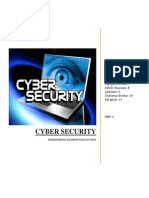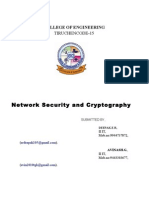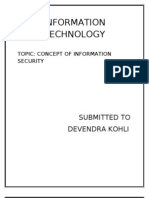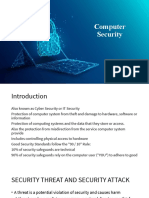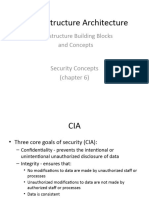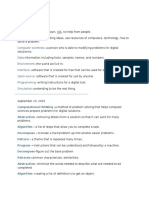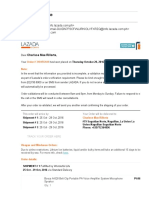0% found this document useful (0 votes)
59 views17 pagesCourse 5
The document defines over 50 new cybersecurity terms and their definitions introduced in Course 5 Modules 1 and 2. Some key terms include:
- Malware - malicious software like viruses, worms, Trojans used to obtain sensitive info or harm systems.
- Phishing - fake emails sent to trick victims into providing private info.
- Denial of Service (DoS) - attack that tries to prevent legitimate access to a network or server.
- Encryption - process of encoding info to protect it from unauthorized access. Includes hashing, public/private key systems.
- Vulnerability - flaw that could be exploited to compromise a system.
Uploaded by
Bernard LongboanCopyright
© © All Rights Reserved
We take content rights seriously. If you suspect this is your content, claim it here.
Available Formats
Download as DOCX, PDF, TXT or read online on Scribd
0% found this document useful (0 votes)
59 views17 pagesCourse 5
The document defines over 50 new cybersecurity terms and their definitions introduced in Course 5 Modules 1 and 2. Some key terms include:
- Malware - malicious software like viruses, worms, Trojans used to obtain sensitive info or harm systems.
- Phishing - fake emails sent to trick victims into providing private info.
- Denial of Service (DoS) - attack that tries to prevent legitimate access to a network or server.
- Encryption - process of encoding info to protect it from unauthorized access. Includes hashing, public/private key systems.
- Vulnerability - flaw that could be exploited to compromise a system.
Uploaded by
Bernard LongboanCopyright
© © All Rights Reserved
We take content rights seriously. If you suspect this is your content, claim it here.
Available Formats
Download as DOCX, PDF, TXT or read online on Scribd
/ 17
















